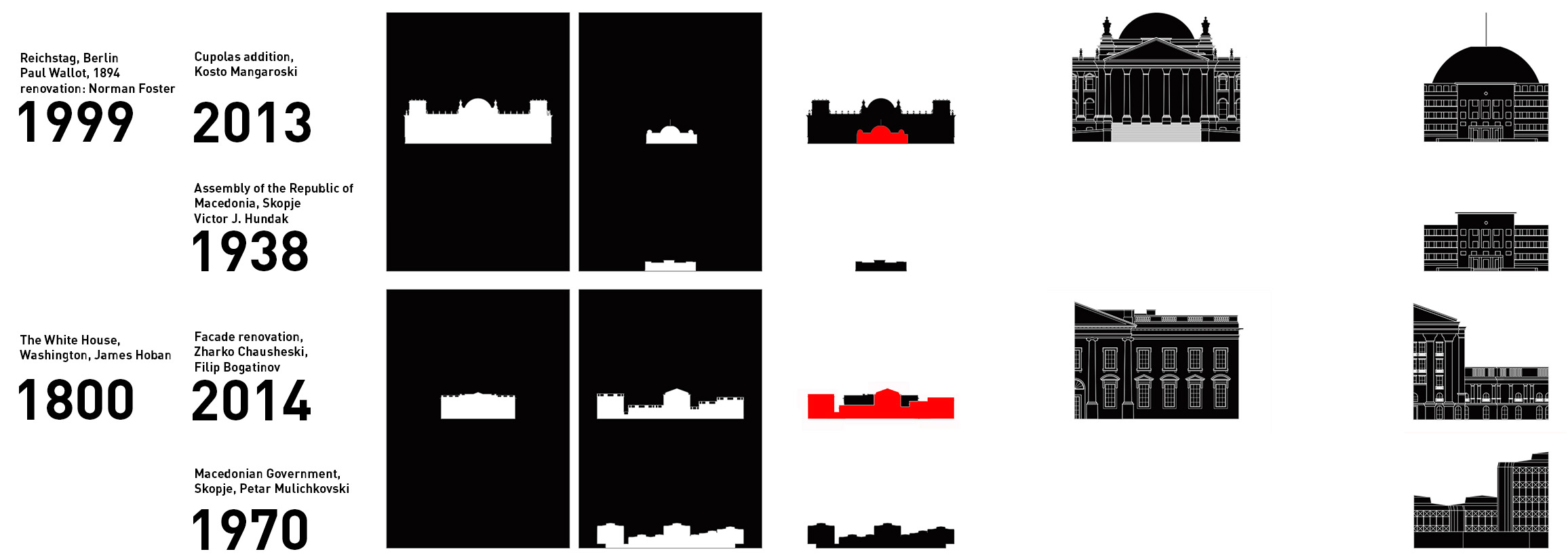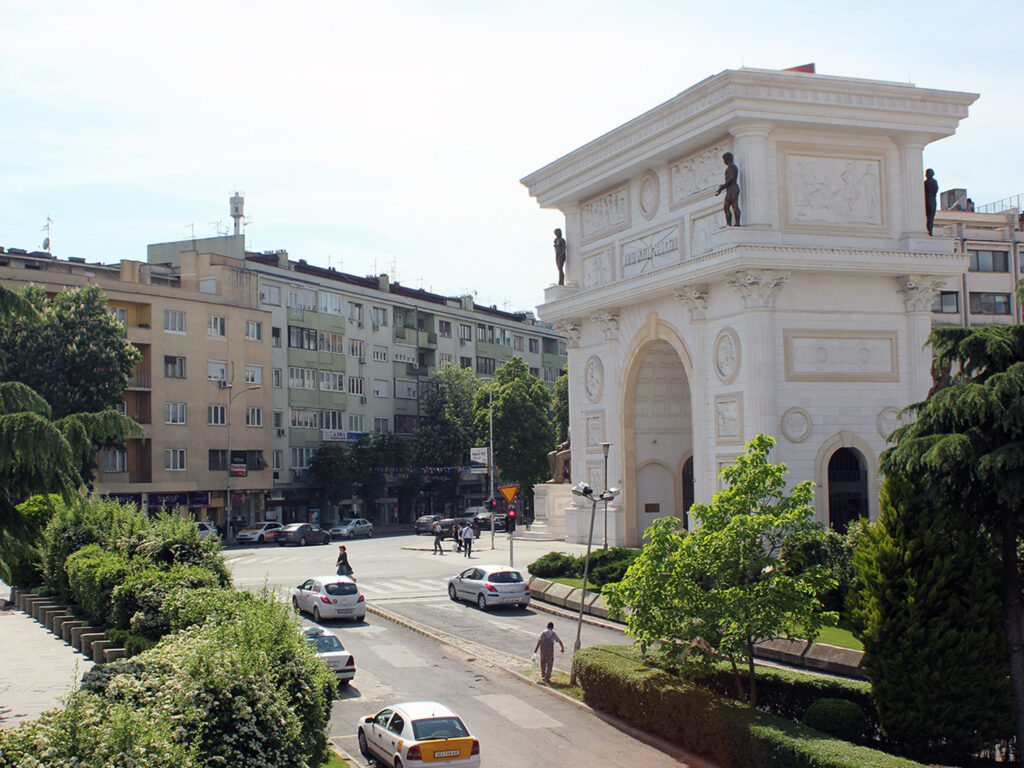
Porta Makedonija, Skopje, 2015
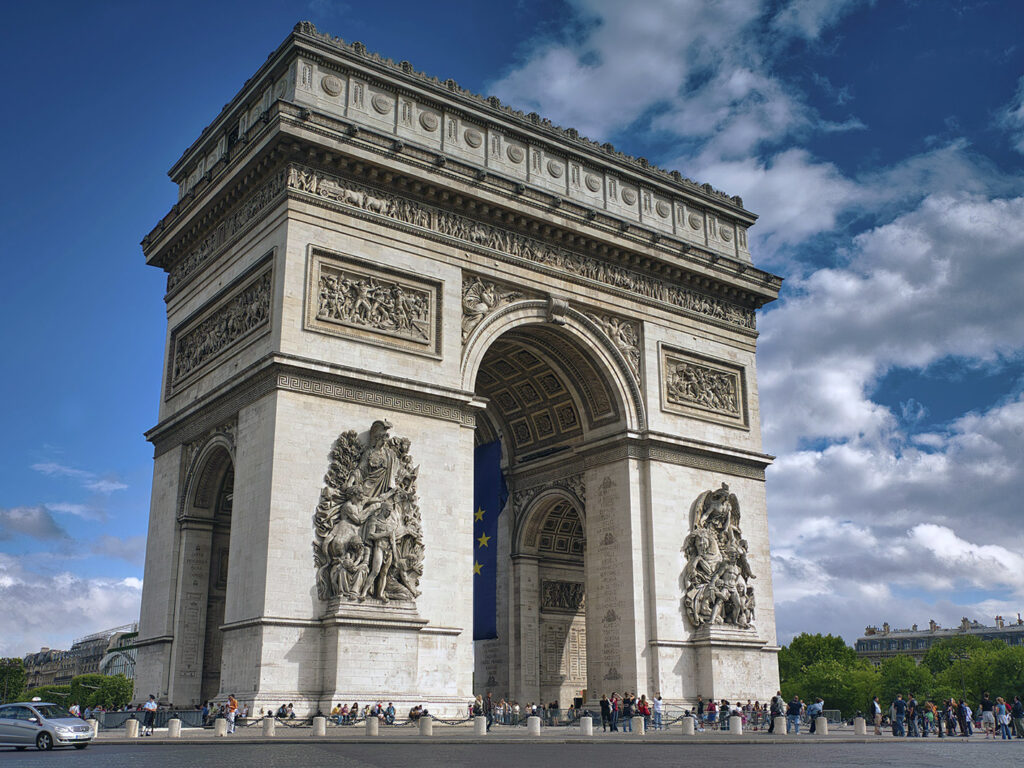
Arc de Triomphe, Paris – Photo by Ian Kelsall
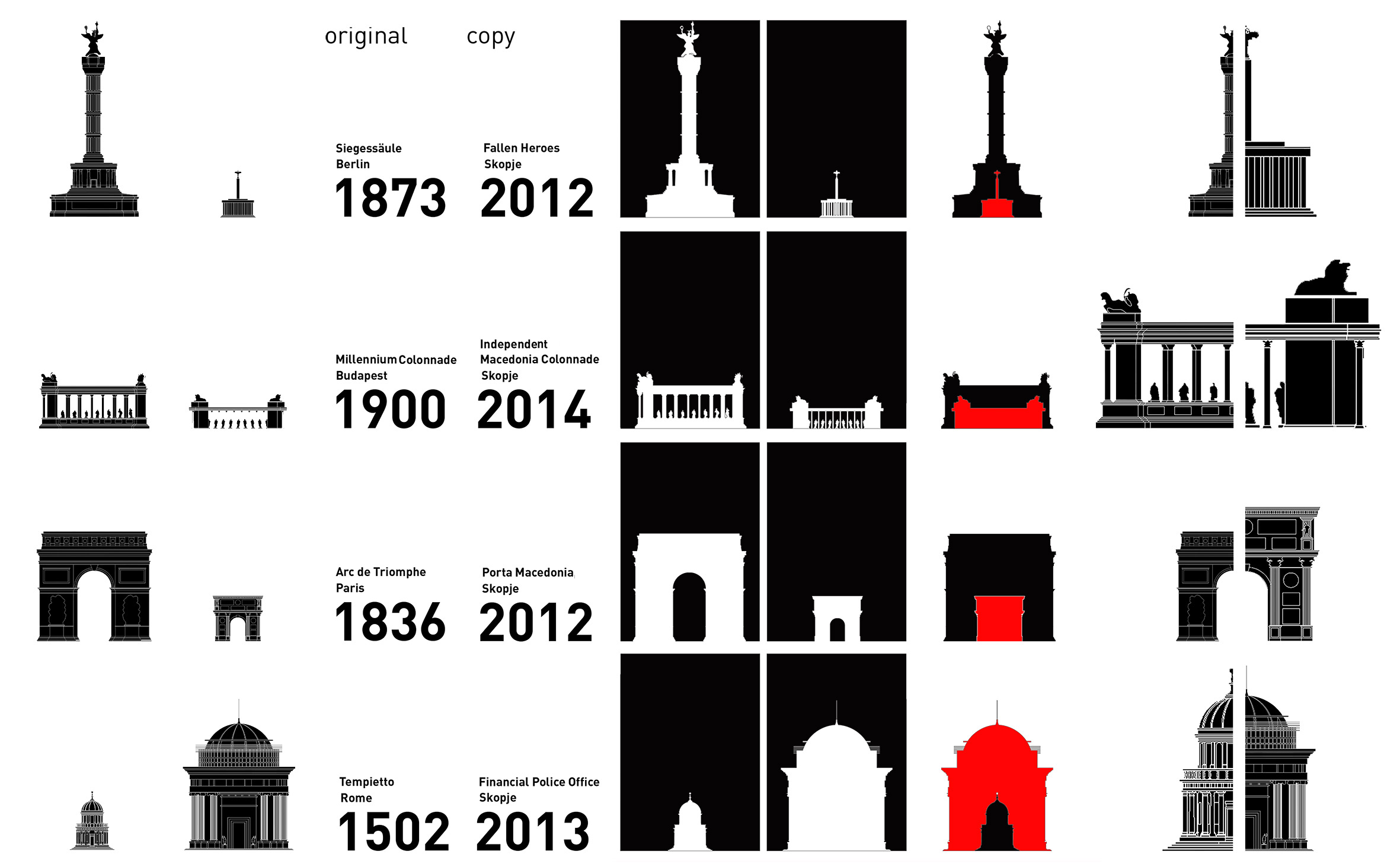
Another tactic for (de)constructing architectural memory is borrow. This is the method of cloning and adopting landmarks, buildings or even just architectural elements from an entirely different spatial and historical context and adjusting them to any free area in the city tissue or attaching them to any building. It is the procedure of easily appropriating objects from another city, regardless of their meaning, origin, purpose or physical context. The pick is made simply by aesthetics and style, without the burdens of context or content.
The way this tactic is serving the main strategic goal of forgetting a specific period in history, is by populating the city center with a new freshly-constructed story, which is to gain all the attention.
The main objective of the borrow tactic is two-dimensional, meaning its primary ambition is only the exterior appearance, whereas three-dimensional, spatial values are neglected.
Looking at the places and dates of the ‘originals’ and the ‘copies’ it is obvious that they belong to entirely different socio-cultural, political, economic etc. contexts. An original and a clone landmark/building, even if they look very much alike, could not possibly represent the same notions. A Triumph arc that is cloned in a different place and time cannot possibly be a victorious representation of the same triumph, nor can it have the same historical value and at the same be brand new.
The scale comparison on the other hand, shows their spatial context differences. Copied objects are being shrunk or expanded, depending on the location they are supposed to fit in or the size of the building they are going to be attached to. From the evident scale alteration we can conclude that content is also not of value for the new buildings. Program, planning and function have a far secondary relevance in the architecture that uses the borrow design tactic.
For Tempietto Bramante (originally a martyrium, built in 1502) to host the institutions of the Financial Police and the Public Prosecution, it needs to be scaled almost three times bigger than the its original size, after which the new programs will just be placed in their new borrowed container, without any concern about their actual spatial needs.
The silhouette and architectural style comparisons on the other hand, show great attention to accurate cloning. These are features that obviously matter when using the borrow tactic. There is strong resemblance, regarding looks, between the originals and the copies in all of the cases, meaning the aesthetic factor is the most important one.
Another aspect of this tactic is the attempt to provide a certain verification of important institutions by attaching to them architectural element borrowed from important institutions of a different political, socio-cultural and economical context. Crowning the Assembly of the Republic of Macedonia with a cupola just like the one on top of the Reichstag building (only scaled to fit) could be interpreted as an acknowledgment-seeking step. But a crucial aspect is completely neglected when borrowing and that is the (hi)story behind the specific element, its architectural language and its purpose, both literal and figurative.
The Berlin Baroque Revival Reichstag building from 1894 was originally built with a glass-steel cupola that was a great engineering achievement of its time. Destroyed in the war, its current glass cupola was built in 1999 as a reminiscing gesture of the original one. The 1938 Assembly building in Skopje was neither built in Baroque Revival Style, nor did it ever have a glass cupola.
These examples are trying to borrow architectural memories by borrowing their physical representations. The center of Skopje in the year 2015 is a showcase of architecture attempting to remember past events, which never actually happened.
If you borrow a triumph arc, are you also borrowing the triumph itself or just a poster of it?
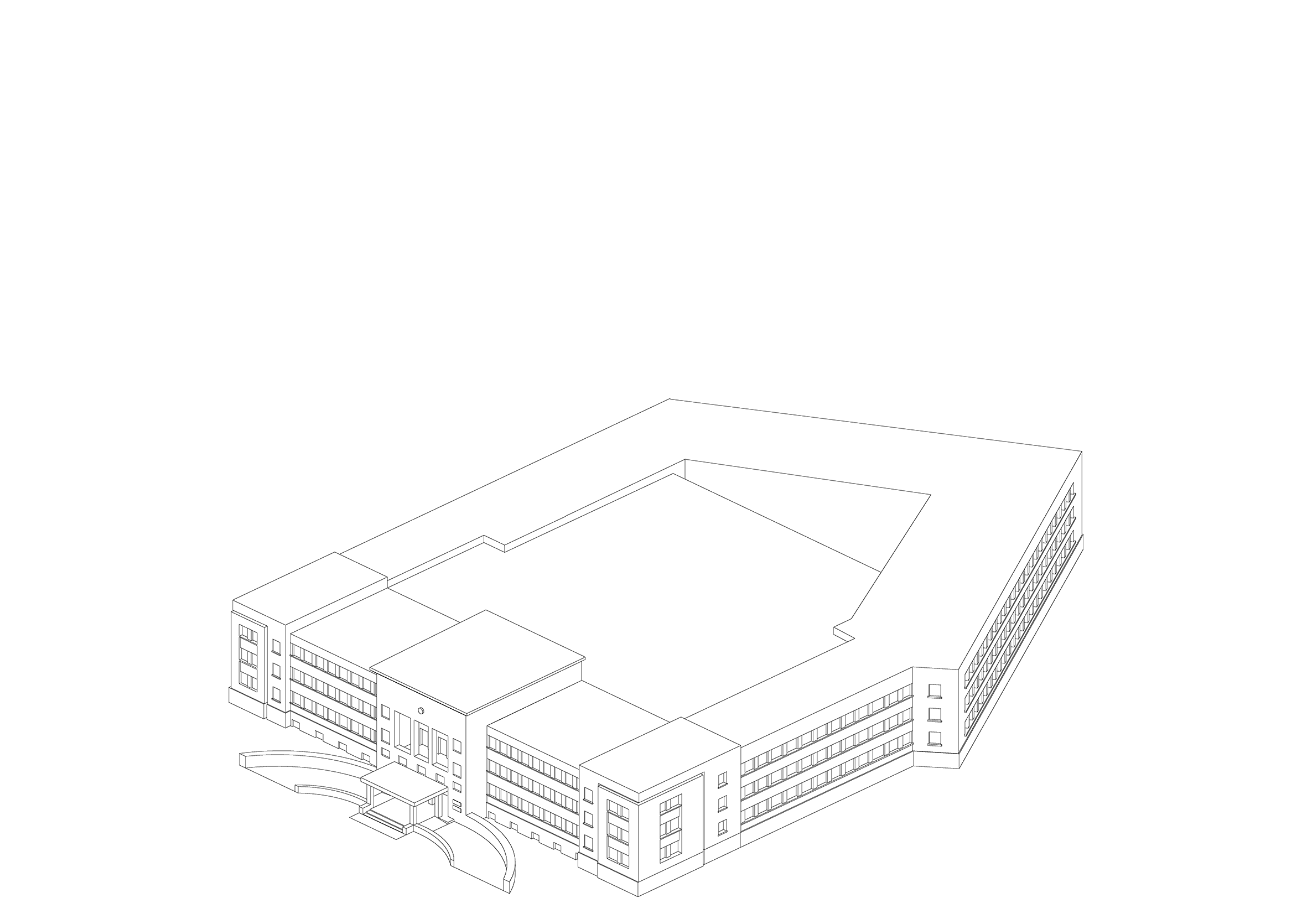
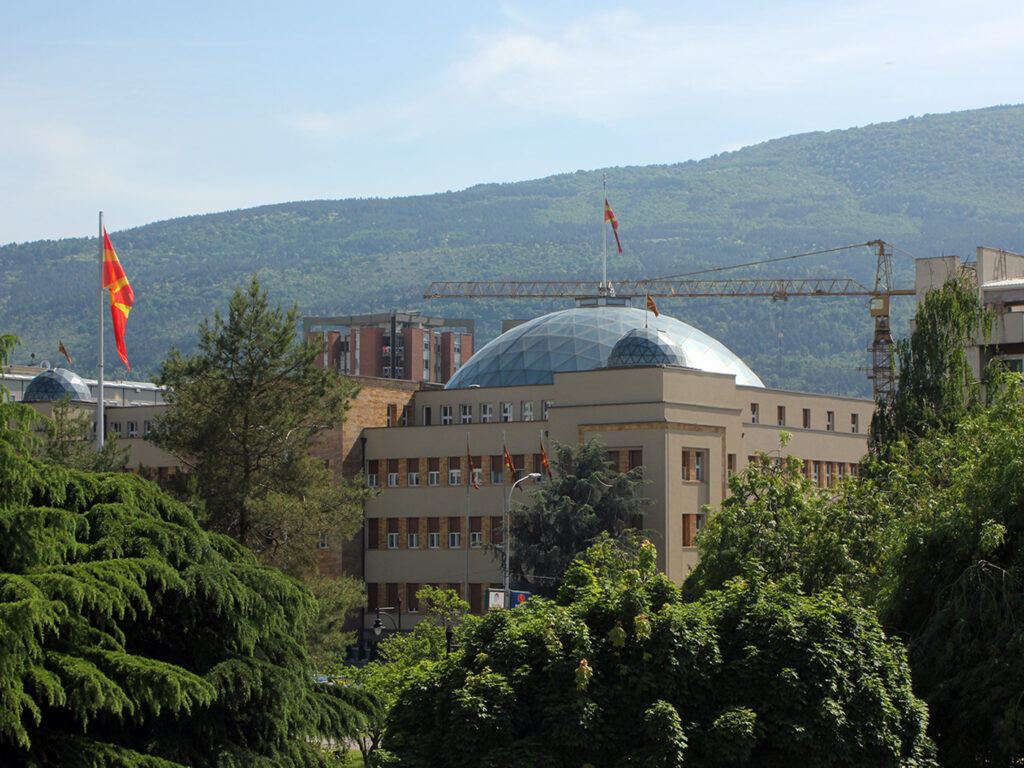
Assembly of the Republic of Macedonia, 2015

Reichstag, Berlin – Photo by Niki Nagy
